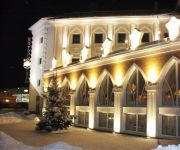Facts and Data
Webpages:
Official Unesco Page
Vladimir - Suzdal Museum - Reserve
Welcome to Vladimir - Official Vladimir City Website
Basis Data:
Unesco World heritage since: 1992
Size of heritage:
Coordinates:
Longitude: 40,417°
Latitude: 56,150°
Summary
These two artistic centres in central Russia hold an important place in the country's architectural history. There are a number of magnificent 12th- and 13th-century public and religious buildings, above all the masterpieces of the Collegiate Church of St Demetrios and the Cathedral of the Assumption of the Virgin.
Location on Map
Show bigger map on Openstreetmap
White Monuments of Vladimir and Suzdal
The White Monuments of Vladimir and Suzdal, located in the Vladimir region of Russia, are a collection of architectural masterpieces that have been recognized as a UNESCO World Heritage site. This ensemble of medieval buildings showcases the rich cultural and historical heritage of the region, reflecting the artistic and architectural achievements of the 12th and 13th centuries.
History
The history of the White Monuments dates back to the time when Vladimir was the capital of the Grand Duchy of Vladimir-Suzdal. The region flourished during the reign of Prince Andrei Bogolyubsky, who sought to establish Vladimir as a rival to Kiev. Under his patronage, numerous churches and monasteries were constructed, showcasing the unique architectural style that blended Byzantine and local traditions.
One of the most iconic structures in the ensemble is the Cathedral of Saint Demetrius in Vladimir. Built in the 12th century, it is renowned for its exquisite frescoes, which depict biblical scenes and saints. The cathedral served as a model for many subsequent churches in the region.
Suzdal, another important city in the ensemble, was a religious and cultural center during the medieval period. The Suzdal Kremlin, a fortified complex, houses several architectural gems, including the Cathedral of the Nativity. This cathedral, with its elegant white stone walls and golden domes, is a prime example of the Suzdal architectural style.
Current State
The White Monuments of Vladimir and Suzdal have been meticulously preserved and restored over the years, ensuring their continued grandeur. These sites are not only of historical and cultural significance but also serve as active places of worship.
Visitors to the White Monuments can explore the intricate architectural details, such as the ornate carvings and delicate frescoes that adorn the interiors of the churches. The serene atmosphere and stunning surroundings make it a popular destination for tourists and pilgrims alike.
Efforts have been made to protect and maintain the authenticity of the sites, with strict regulations in place to prevent any alterations that could compromise their historical value. Conservation projects have been undertaken to preserve the fragile frescoes and stonework, ensuring that future generations can appreciate the beauty of these monuments.
The White Monuments of Vladimir and Suzdal continue to be an important cultural and religious center in Russia. They serve as a reminder of the country's rich history and architectural achievements. The UNESCO World Heritage status has not only brought international recognition but has also encouraged the local communities to appreciate and protect these invaluable treasures.
Overall, the White Monuments of Vladimir and Suzdal stand as a testament to the artistic and architectural brilliance of the medieval period in Russia. Their preservation and recognition as a UNESCO World Heritage site ensure that their historical and cultural significance will be cherished for generations to come.
Hotels and places to stay
Amaks Golden Ring
Vladimirsky Dvorik Mini-Hotel Владимирский Дворик
Vladimir Hotel
Monomah
Zastava Hotel
Rus Hotel
Voznesenskaya Sloboda
Klyazma Hotel Complex
Rubicon Hotel
KNYAZ VLADIMIR
Videos from the area
Videos provided by Youtube are under the copyright of their owners.















